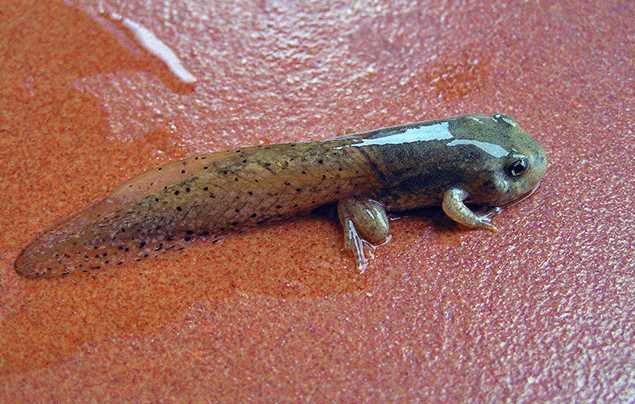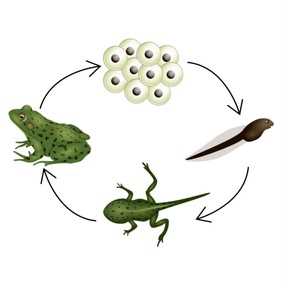The life cycle of a frog begins with an egg, which is laid and fertilized in the water. These eggs hatch into tiny tadpoles, resembling fish with long tails. Tadpoles are purely aquatic and spend their days swimming and feeding on algae and other small aquatic plants.
The Stages of a Frog’s Life Cycle

During the egg stage, fertilization takes place and the development of the embryo begins. The eggs are typically laid in clusters and are protected by a jelly-like substance. After a few weeks, the eggs hatch and the next stage of the life cycle begins: the tadpole stage.
| Stage | Description |
|---|---|
| Egg Stage | From fertilization to hatching |
| Tadpole Stage | From hatching to metamorphosis |
| Frog Stage | From metamorphosis to adulthood |
In the fascinating life cycle of a frog, the egg stage is the beginning of an incredible transformation that will eventually lead to the development of a fully grown adult frog. This stage is crucial as it sets the foundation for the rest of the journey.
After the female frog lays her eggs, they are typically deposited in water, usually in ponds or streams. Water is essential for the eggs to develop and hatch successfully. The eggs are usually laid in a jelly-like mass, providing protection and buoyancy.
During this stage, the frog eggs undergo fertilization. The male frog releases sperm, which then fertilizes the eggs externally. Once fertilized, the eggs begin to develop and grow. It is during this time that the external gills of the tadpole begin to form.
The egg stage is a critical period for the survival of the developing frog. The eggs must be protected from predators and other environmental factors. The jelly-like mass provides some level of protection, but it is not foolproof. The adult frogs themselves play a role in protecting the eggs. Some frog species will guard their eggs, while others may leave their eggs unattended.
Tadpole Stage: From Hatching to Metamorphosis
Once the frog eggs hatch, they release tiny tadpoles into their watery habitat. These tadpoles have gills and a long tail, making them perfectly adapted for life in the water. They feed on algae and other small organisms found in their surroundings.
Throughout the tadpole stage, the amphibian larvae continue to grow and develop. They develop hind legs first, which enable them to swim more efficiently. Later, front legs start to emerge, further aiding their mobility.
During this period, the tadpoles’ diet changes as well. They start to consume larger and more varied food, including insects and small invertebrates. This change in diet contributes to their rapid growth and development.
The tadpole stage is marked by significant physical changes and a transition from an aquatic lifestyle to a semi-aquatic and eventually fully terrestrial one. Throughout this process, the tadpoles develop the necessary adaptations required for life on land, such as lungs, legs, and an adult digestive system.
Frog Stage: From Metamorphosis to Adulthood
After completing the amazing process of metamorphosis, the tadpole emerges as a fully developed frog. This final stage of the frog’s life cycle is truly remarkable and marks the beginning of its adult life.
During metamorphosis, the tadpole undergoes a series of physical changes that allow it to transition from living in water to living on land. One of the most noticeable changes is the development of hind legs, which enable the frog to jump and move rapidly on land. Additionally, the tadpole’s tail starts to shrink and eventually disappears, while its lungs develop to accommodate breathing in air instead of relying solely on gills.
The Aquatic to Terrestrial Transition
During this transition, the frog’s skin also undergoes changes. It becomes thicker and more waterproof, which allows the frog to retain moisture and prevent dehydration while living on land. The skin also develops camouflage patterns and colors, helping the frog blend in with its surroundings and hide from predators.
The Calls of Adulthood

Overall, the frog stage of the life cycle marks the final transformation of the tadpole into an adult frog. Through metamorphosis, the tadpole adapts its body structure and behavior to survive and thrive in both aquatic and terrestrial habitats. From jumping to croaking, the adult frog is a fascinating creature that continues to captivate the curiosity of scientists and nature enthusiasts alike.

I’m Lena Adams—a product of an unconventional upbringing in the African wilderness. My father, a daring explorer of African wildlife, sparked my fascination with reptiles, a passion that intertwined with the tragic loss of my mother during an expedition, leaving an indelible mark on my life. Driven to understand the creatures that captivated my parents, I embarked on my journey, sharing insights about reptiles, frogs, and lizards on my website. Through my explorations and conservation efforts, I honour my family’s legacy while seeking connections—to the creatures, nature, and the mother whose presence I yearn to understand.
